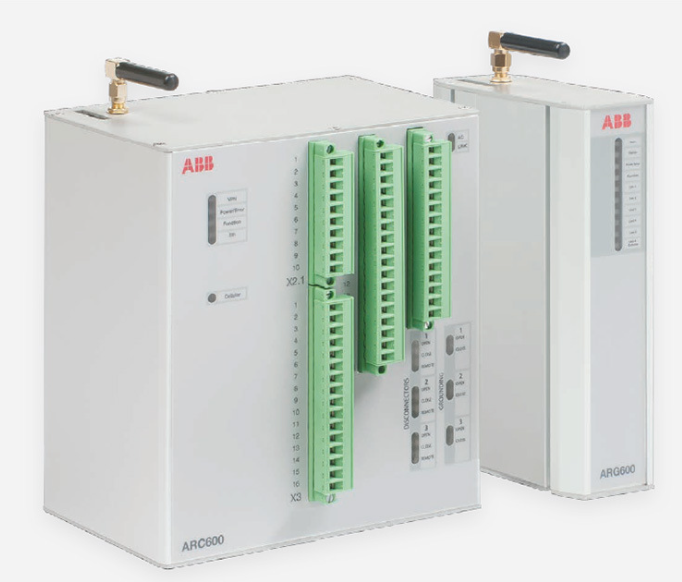ABB PP846A 3BSE042238R2 Industrial Control Panel
Product overview
Positioning: Panel 800 is a human-computer interaction operation panel used to display and control functions such as text, dynamic indicators, time channels, alarms, and recipe processing. It adopts an object-oriented working mode and is configured on a PC through the Panel Builder 800 tool. Projects can be transferred and stored in the operation panel.
Compatibility: Can connect to various automation devices such as PLCs, servo systems, or drives.
Safety precautions
Installation environment: Suitable for Class I, Zone 2, Groups A, B, C, D or non hazardous locations, with a maximum ambient temperature of 40 ° C for horizontal installation and 50 ° C for vertical installation.
Explosion risk: Before disconnecting the equipment, the power must be cut off or the area must be confirmed to be non hazardous. When replacing the expansion unit, the power must be cut off, and battery replacement must be carried out in a non hazardous area.
General safety: Do not use in high explosive hazardous environments to prevent liquids, metal shavings, etc. from entering the panel. Only qualified personnel can operate. LCD display liquid should be dealt with promptly if it comes into contact with the skin or eyes.
Key points of installation
Space requirements: The installation board thickness is 1.5-9.0mm, the panel cut size is 343x208mm, and heat dissipation space needs to be reserved.
Installation process: Check for damage after unpacking, cut installation holes according to markings, fix the panel with brackets and screws, connect cables in sequence to ensure good grounding, use shielded communication cables and separate high-voltage cables.
Mode switch: located on the back of the panel, it has modes such as operation, system recovery, image loading, service menu, self-test, and hard reset. When in use, it must be placed in the OFF position and only qualified personnel can operate it.
Internal CF card installation: Used to expand project memory, power off during installation, insert into the CPU board slot, choose to move files to the internal card during startup, and set the card size in Panel Builder 800.
Technical Parameter
Physical characteristics: Front panel size 382x252x6mm, installation depth 58mm, weight 2.5kg, front panel protection level IP66, rear panel IP20.
Interfaces: RS422/RS485 (25 pin D-sub), RS232C (9-pin D-sub), Ethernet (shielded RJ45), USB (Host A and Device B), CF card slot (Type I and II).
Display: TFT-LCD, 800×600 pixels, 64K colors, CCFL backlight with a lifespan of>50000 hours at 25 ° C.
Power supply:+24V DC (20-30V DC), normal power consumption 0.5A, maximum 1.0A.
Environmental conditions: Vertical installation temperature 0-50 ° C, horizontal installation 0-40 ° C, storage temperature -20-70 ° C, relative humidity 5-85% (no condensation).
Chemical resistance
Metal shell: Powder coated aluminum, resistant to acetic acid, citric acid, diesel, etc., limited resistance to butanol, hydrochloric acid, etc., not resistant to concentrated acid, acetone, etc.
Touch screen and cover layer: Autotex F157/F207 is resistant to various chemicals, but not to high-pressure steam and concentrated mineral acids. The Autoflex EB protective film has similar resistance and is not suitable for long-term direct sunlight.

Communication and Connection
Port definition: Pin signals and directions for Ethernet, RS-232, RS-422/485, and other ports.
Adapter: CB810 USB to Ethernet adapter is used for project transmission between PC and panel, non fixed installation for use.
Expansion module: The Profibus DP expansion module is used to connect to the Profibus DP network and needs to be powered off and fixed during installation.
Additional installation suggestions
Grounding: Use 2.5mm ² wires to connect the panel base to the chassis, with short and thick grounding braided wires providing the best effect.
EMC protection: Use shielded cables, Ethernet shielding layer single ended grounding or capacitor grounding, separate high and low voltage cables, and use ferrite cores to suppress interference.
Temperature management: Install fans inside the cabinet to dissipate heat, pay attention to the impact of temperature on the lifespan of electrolytic capacitors, and turn off the panel backlight to reduce power consumption.
Safety isolation: The panel has galvanic isolation from the 24V DC power supply, but there are no RS232, RS422/485, or USB communication ports. Only Ethernet has isolation. When connecting multiple devices, attention should be paid to the ground potential difference.
RS485 bus: uses shielded twisted pair with a terminal resistance of 120 Ω. Depending on the device design, pull-up/pull-down resistors may be required, and the shielding layer can be grounded at one end or through a capacitor.







